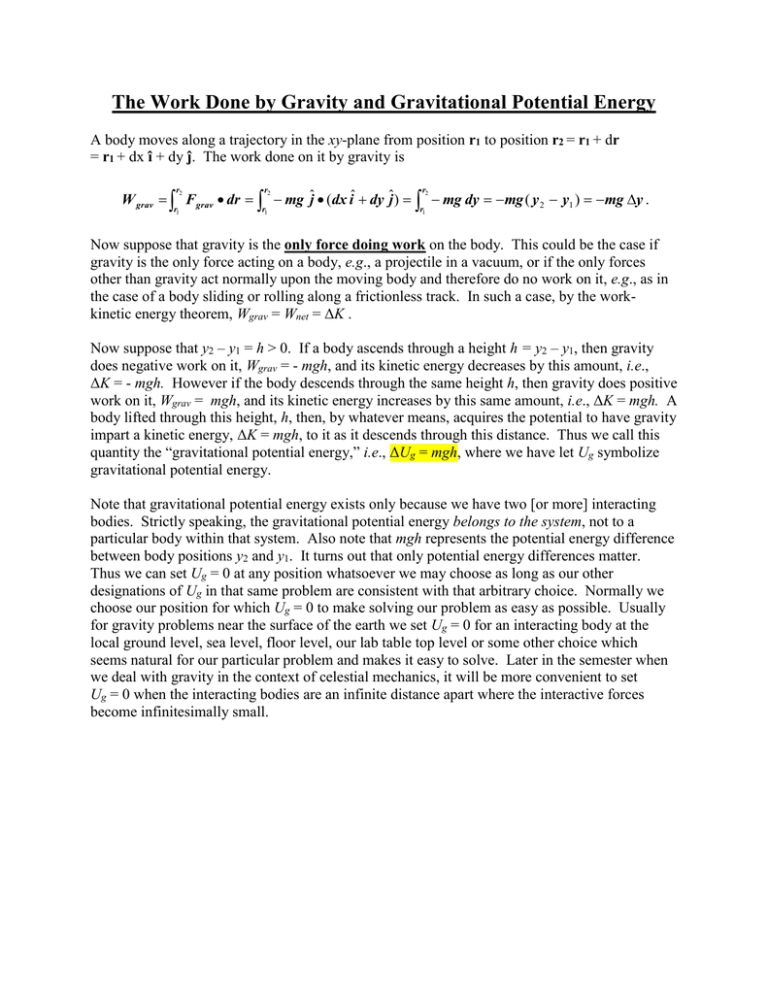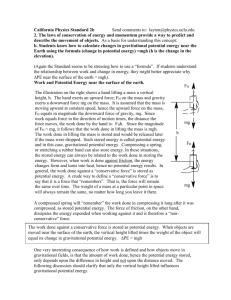The Work Done by Gravity and Gravitational Potential Energy
advertisement

The Work Done by Gravity and Gravitational Potential Energy A body moves along a trajectory in the xy-plane from position r1 to position r2 = r1 + dr = r1 + dx î + dy ĵ. The work done on it by gravity is r2 r2 r2 W grav Fgrav dr mg ˆj (dx iˆ dy ˆj ) mg dy mg ( y 2 y1 ) mg y . r1 r1 r1 Now suppose that gravity is the only force doing work on the body. This could be the case if gravity is the only force acting on a body, e.g., a projectile in a vacuum, or if the only forces other than gravity act normally upon the moving body and therefore do no work on it, e.g., as in the case of a body sliding or rolling along a frictionless track. In such a case, by the workkinetic energy theorem, Wgrav = Wnet = ΔK . Now suppose that y2 – y1 = h > 0. If a body ascends through a height h = y2 – y1, then gravity does negative work on it, Wgrav = - mgh, and its kinetic energy decreases by this amount, i.e., ΔK = - mgh. However if the body descends through the same height h, then gravity does positive work on it, Wgrav = mgh, and its kinetic energy increases by this same amount, i.e., ΔK = mgh. A body lifted through this height, h, then, by whatever means, acquires the potential to have gravity impart a kinetic energy, ΔK = mgh, to it as it descends through this distance. Thus we call this quantity the “gravitational potential energy,” i.e., ΔUg = mgh, where we have let Ug symbolize gravitational potential energy. Note that gravitational potential energy exists only because we have two [or more] interacting bodies. Strictly speaking, the gravitational potential energy belongs to the system, not to a particular body within that system. Also note that mgh represents the potential energy difference between body positions y2 and y1. It turns out that only potential energy differences matter. Thus we can set Ug = 0 at any position whatsoever we may choose as long as our other designations of Ug in that same problem are consistent with that arbitrary choice. Normally we choose our position for which Ug = 0 to make solving our problem as easy as possible. Usually for gravity problems near the surface of the earth we set Ug = 0 for an interacting body at the local ground level, sea level, floor level, our lab table top level or some other choice which seems natural for our particular problem and makes it easy to solve. Later in the semester when we deal with gravity in the context of celestial mechanics, it will be more convenient to set Ug = 0 when the interacting bodies are an infinite distance apart where the interactive forces become infinitesimally small.




